Why Are Some Horse Races Shown on TV But Not Others?
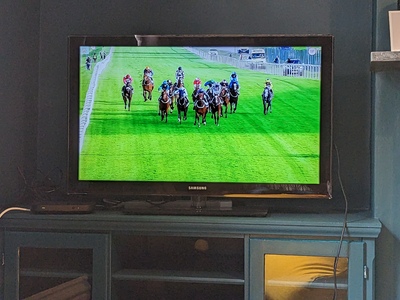 There is more racing related video content out there than ever before if you know where to look.
There is more racing related video content out there than ever before if you know where to look.
What with online video platforms, live streaming services at the bookies, embedded clips on social media and the like, we could watch racing content all day if we wanted to.
One obvious place to look for it would be the television, but if we are talking about regular channels rather than subscription services, you might struggle to find racing programs.
It’s true that ITV show racing, albeit a choice selection rather than every race from every track, but there is no racing on the BBC, Channel 4, or Channel 5.
It wasn’t always this way though. There was a time when British horse racing could regularly be found on the Beeb, including big races like the Grand National, and for a while Channel 4 was the only regular station that showed racing full stop.
So what changed?
Well, it’s all about who owns the broadcasting rights.
In order to show horse racing, a channel needs permission in the way of a business deal with the racecourses involved, and as with all business deals, they eventually come to an end or need renegotiating.
On the other side of the coin, a channel might decide that racing isn’t working for them anymore and want to move in a different direction, which leaves the door open for a new broadcaster to fill their shoes.
Therefore, it’s down to the owner of the broadcasting rights to decide which races are shown and where; if the company with the rights to a course isn’t a regular TV channel, then that course’s races won’t be shown on regular TV.
How do Broadcasting Rights Work with Horse Racing?
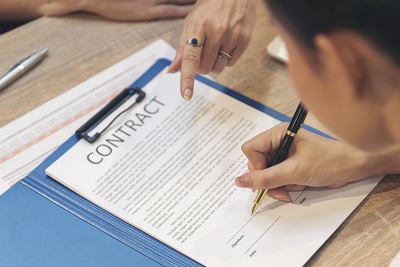 You can’t just record and broadcast whatever you want to. When you are on private property, you need legal permissions and licenses before you can use live video of that place for your own monetary gain.
You can’t just record and broadcast whatever you want to. When you are on private property, you need legal permissions and licenses before you can use live video of that place for your own monetary gain.
It stands to reason then that since the event you want to record and broadcast is worth recording and broadcasting in the first place, it has value, and this is why paying for broadcasting rights is a thing.
A broadcasting company who wants to profit from an event, will reach out to the people who own and run the event and bid for the rights to show it. They may have to outbid a different company if another is also interested, or if not, they will just have to reach a point that both they and the owners are happy with.
So when a racecourse owner agrees broadcasting rights with a broadcasting company, they are essentially entering into a joint venture with them.
It is ultimately supposed to be beneficial for both parties, with the course owner being paid for the rights to film their action, and the broadcaster attracting a greater number of viewers and therefore also more money from subscriptions or advertising time on their channel, or even money from other services wanting to broadcast what they are recording.
A bookmaker’s streaming service would be a good example of this.
The broadcasting company will be showing the content on their own channel too, but they can also send it to an online sportsbook platform provider who can then give their bookmaker clients access to it on their websites.
The fact that a large number of courses banded together around 2004, and that most others are run by a few umbrella companies, means that deals tend to be struck for several courses at the same time. It also means that rights to specific big racing events, known as the Crown Jewel events, can be sold independently of all other races at the same courses.
This is why races such as The Grand National, Cheltenham Festival, and Royal Ascot end up on regular TV; ITV have the rights to the Crown Jewel events, and choose to show them on a flagship channel since they attract a lot of attention. They also have exclusive rights to ‘free to air’ racing, which means they can’t charge viewers an extra fee for racing content like other broadcasters might.
In simple terms though, the process of establishing broadcasting rights begins when one party asks another if they can record what is going on at their event and show it to people, and the first party says yes, but only if you give us some money.
Which TV Channels Show Horse Racing?
There are still a large number of independently owned racecourses in the UK, and they are free to strike deals with any broadcaster they like, while the racecourses owned by larger groups such as the Jockey Club or Arena Racing have their broadcasting rights decided for them.
There aren’t many broadcasters to choose from though, so other than ITV as explained above, the rights to horse racing TV coverage are owned by just two companies.
This isn’t really a problem, in fact it probably makes things easier – it would be a huge pain to have lots of different companies in charge of broadcasting races from the 59 courses in the UK – but nevertheless, all courses in the UK have broadcasting deals with one of the following two companies.
Sky Sports Racing (at the races)
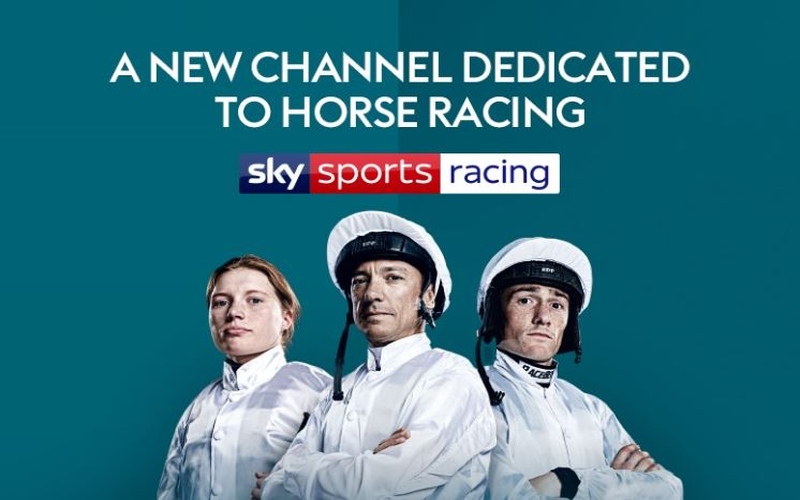
First broadcasting in May of 2002 under the name At the Races, the organisation now known as Sky Sports Racing was originally a partnership between Channel 4, Sky, and Arena Leisure.
Arena owned the following racecourses at the time:
- Doncaster
- Folkestone (closed in 2012)
- Lingfield Park
- Windsor
- Southwell
- Wolverhampton
- Leicester
One of the attractions for the television companies, was the fact that 3 of these courses were all weather or artificial tracks, meaning they could be used more often and thus generate more revenue.
However, the venture didn’t last long as it ran into financial trouble almost immediately, shutting down in March 2004, restructuring, and then reopening in June the same year but without any involvement from Channel 4.
In 2012 Arena Racing merged with Northern Racing adding a further 10 courses to the offering:
- Bath
- Brighton
- Chepstow
- Ffos Las
- Fontwell Park
- Hereford
- Newcastle
- Sedgefield
- Uttoxeter
- Yarmouth
With the closing of Folkestone this left the group with a 16 strong portfolio of racecourses from where the races could be filmed and shown on television.
In 2018 there was a bit of a re-brand, but confusingly, although the official name of the channel is now Sky Sports Racing, the at the races brand is still used as the company name and for the website, albeit all in lower case now.
Punters tend to use the names interchangeably though.
They have signed up some extra racecourses since 2012 too:
- Ascot
- Banger on Dee
- Chester
- Hexham
- Newton Abbot
- Plumpton
- Ripon
- Towcester
So a total of 24 racecourses to broadcast from, which gives the channel plenty of content on a day to day basis and punters plenty of reasons to watch.
Of course, being Sky this channel is part of a subscription service, but it broadcasts UK based racing content from 9am with interviews and news items about the day ahead and results from the previous day, and moves onto US and Australian racing in the evening and early morning.
You don’t have to sign up to Sky to watch the races, since all bookmakers will have a license to show races broadcast by Sky Sports Racing too, whether online or in person at one of their shops.
Racing TV (Racing UK)
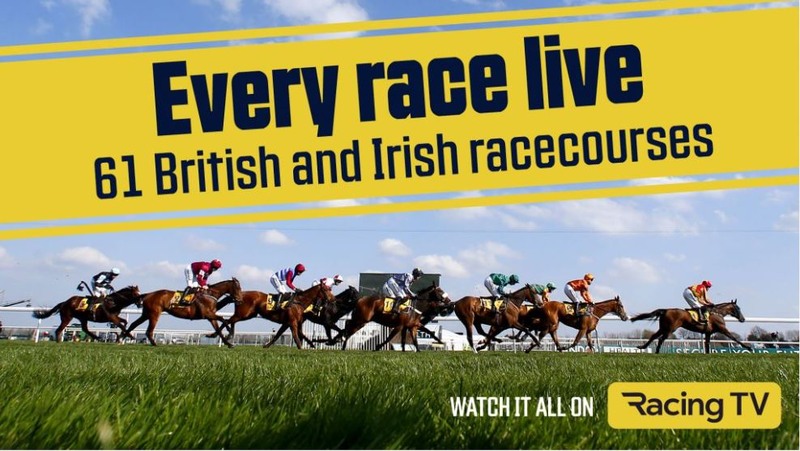
Interestingly enough, Racing TV began life as a direct response to the closure of the original At the Races channel in 2004.
In order to continue the coverage of horse racing in the UK, a channel imaginatively named The Horse Racing Channel was hastily put together, although its name soon changed to Racing UK.
This name would stick until 2018 when the channel was re-branded while it was actually on air. This was because they were about to do their first live broadcast of Irish racing, and realised during the planning stages that Racing UK would no longer be reflective of their offering.
The structure of Racing TV is a little different to that of Sky Sports Racing, as the channel is owned by a holding group; Racecourse Media Group Ltd.
Racehorse Media Group (RMG) is, in turn, owned entirely by its shareholders, and its shareholders are the racecourses themselves.
These are:
- Aintree
- Ayr
- Beverley
- Carlisle
- Cartmel
- Catterick Bridge
- Cheltenham
- Epsom Downs
- Exeter
- Fakenham
- Goodwood
- Hamilton Park
- Haydock Park
- Huntingdon
- Kelso
- Kempton Park
- Leicester
- Ludlow
- Market Rasen
- Musselburgh
- Newbury
- Newmarket
- Nottingham
- Perth
- Pontefract
- Redcar
- Salisbury
- Sandown Park
- Stratford-on-Avon
- Taunton
- Thirsk
- Warwick
- Wetherby
- Wincanton
- York
This means all 35 racecourses are the masters of their own destiny when it comes to media and broadcasting rights, and any profits made by RMG go straight back to the courses themselves.
Plus, since the channel first started, the business has grown to include other revenue streams such as pre-race and race day data, international services, and of course the 60,000 individual subscriptions to their channel alongside the 10,000 subscriptions from pubs and clubs.
One funny little fact is that they actually sell their broadcasts to Sky among others like Freeview, Virgin, and YouView. So even though they are technically in competition, the two racing broadcasters work together as well.
The channel usually starts the day with a roundup of the day before, then moves on to talking about the upcoming races of the day in question. All races are broadcast live with commentary and analysis going on into the evening, while there is much more depth on content on the website.
A Brief History of Racing on TV in the UK
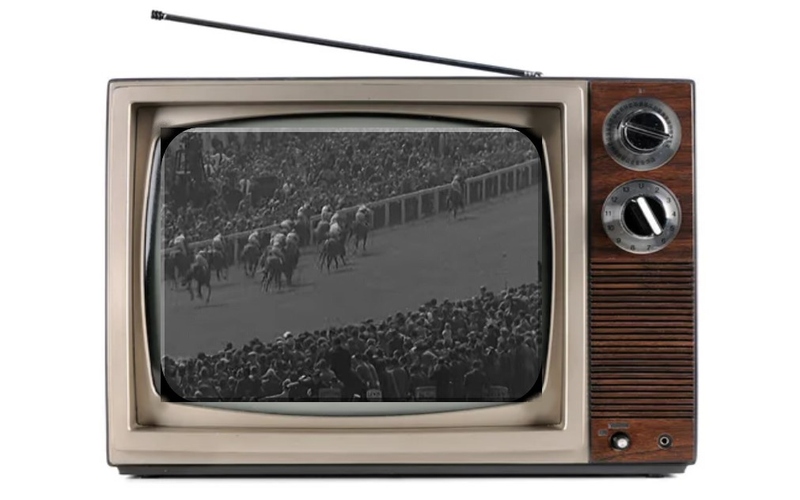
The very first race broadcast on TV in the UK was at Ascot in 1951, and only around 764,000 households had a television back then – that’s somewhere between 5% and 10% of households.
What with horse racing being such a popular sport, when ITV launched in 1955 the races were one of its staple programs, and when the BBC launched Grandstand in 1958 (remember that brilliant theme tune?) racing was a core segment of that program too.
ITV launched their own version of Grandstand in 1965, World of Sport, but it was never as well loved.
Broadcast rights existed back then too however, and while the BBC could show some races, only ITV could show others.
The Epsom Derby was an exception to this rule, however, as it was a protected event, so in 1960 both channels broadcast this race, but it was the BBC who showed the Grand National for the first time, in the same year.
Then in 1969 ITV first launched their program ‘They’re Off!’, which broadcast the action from 2 courses each week, but in the 1970s the title was changed to The ITV Seven, reflecting the number of races it would show.
This also paved the way for a bet which older readers may remember, also called the ITV Seven, and not unlike the Scoop6 bet which is available now.
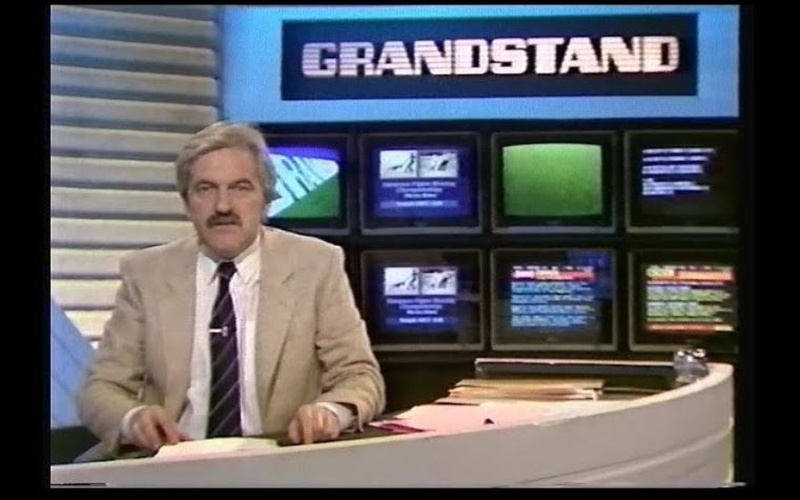
In the 1980s ITV began to wind down its racing coverage, with some regional channels not showing mid-week racing at all, however, in 1984 Channel 4 stepped in to pick things up again and launched Channel 4 Racing.
ITV’s answer to Grandstand, World of Sport, ceased airing in 1985, and the slow transfer of racing broadcasting rights began to shift over the Channel 4 entirely, but they didn’t reinstate a Saturday sports show to go up against Grandstand, so racing coverage was more limited.
It was in June 1988 that ITV’s 30+ year relationship with horse racing would end for good, as they showed the Epsom Derby for the last time.
Things slowed down for racing and TV during the 90s, as other sports and programs gained popularity.
In 1994 the BBC showed the Cheltenham Festival for the final time, with Channel 4 once again picking up the reigns, but it was also in the 90s that racing’s first subscription channel would launch.
The Racing Channel began in 1995, making it the first single sport channel in the world – and arguably the most over-priced too costing a whopping £19.99 per month!
It didn’t last long, closing in 2003, but for a while it had something of a monopoly on British Racing, until the industry reshuffled and At the Races then Racing UK were formed.
In 2007, after almost 50 years, the BBC pulled the plug on Grandstand, and with it went the last real link to the BBCs history with racing. It had been reducing coverage for many years, but Grandstand felt like the end.
The Beeb did show some of the bigger races for the next couple of years, but we are talking a handful of days of racing each year, and in 2012 it aired its last ever race. Channel 4 was now the only terrestrial channel to broadcast horse racing in the UK.
As of 2016 though, ITV Racing was back after a 29 year hiatus, taking all of the racing rights from Channel 4 and becoming the new sole terrestrial TV channel to show racing in the UK, with around 100 days of racing shown each year.
Number of Races Shown on TV in Decline
We mentioned at the beginning of the article that the amount of live racing shown on television has dropped over the years, so lets dig into some real figures to investigate that journey.
This is a graph with data taken from the British Horse Racing Authority:
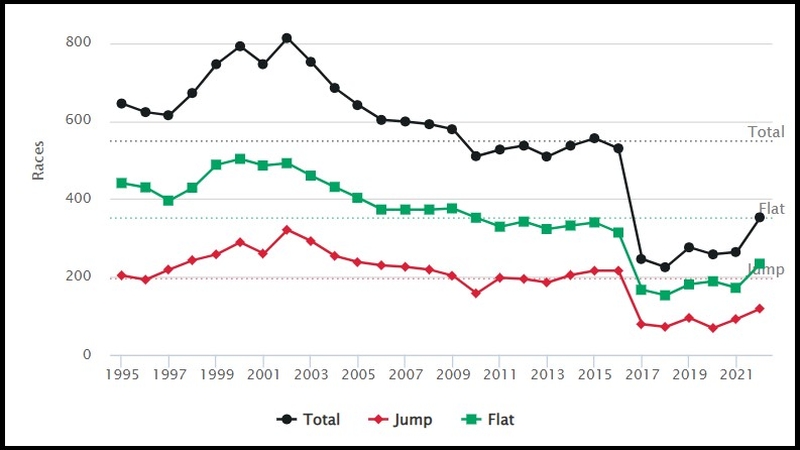
The first thing to point out is that there are more flat races run each year than national hunt races, so the discrepancy between the number of televised races in each category can be explained quite easily.
Between 2016 and 2020 there were 17,948 national hunt races and 30,747 flat races run in total; and if 30,747 is 100% then 17,948 is 58.37% of that. In the same time period there were 531 national hunt races televised and 1,004 flat races televised; and if 1,004 is 100% then 531 is 52.88%. Not a huge difference between the two figures.
This aside, it’s obvious to the eye that there was a peak in the early 2000s for both disciplines, as well as a very steep drop around 2016-2017.
The peak might be explained by the arrival of Racing UK and At The Races in the early 2000s, while at the same time The Racing Channel was in its death throws, with all of them battling for supremacy and showing as much racing as possible.
The huge dip in 2016/17 coincides perfectly with Channel 4’s handover of racing broadcast rights to ITV. As they lost interest over the years the number of races shown started to fall, until the point at which ITV took over and completely restructured the way they would show racing and which races would be shown.
Note too, that ITV upped their racing content after the COVID pandemic in 2020, and we can se the numbers beginning to climb again from all time lows of 225 total televised races in 2018, up to 253 total in 2022, the highest number since 2016.
